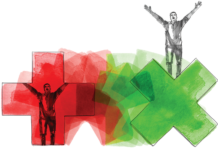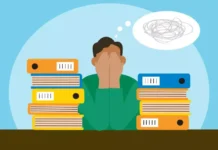Excerpt:
Green Tea
Serving size: 8 ounces
Caffeine: About 28 milligrams
Some people think that green tea is an herbal tea with no caffeine. It actually comes from the same leaves as black tea (the Camellia sinensis bush). It generally does have a bit less caffeine than black tea.
Black Tea
Serving size: 8 ounces
Caffeine: About 47 milligrams
Skip your morning coffee and you may get groggy, tired, irritable, and even sick. If you want to cut back, do it slowly. That’ll give your body a chance to get used to it. A cup of tea in the morning instead of coffee might be a good place to start. Even the strongest black teas have much less caffeine than coffee.
Iced Tea
Serving size: 8 ounces
Caffeine: 25-48 milligrams
The size here is the same as the other teas. But keep in mind that when you eat out, iced tea generally comes in larger servings. That could mean that you could get more than 100 milligrams of caffeine.
Some Breakfast Cereal
Serving Size: 1 cup
Caffeine: 2 to 11 milligrams
The ones with caffeine often have chocolate flavor. Cocoa Puffs have around 2 milligrams per cup, while other cereals could have much more. And keep in mind that most people eat far more than the recommended serving size of 1 cup.
Energy Bars and Gels
Serving size: Varies
Caffeine: Varies
There’s a wide range of caffeine amounts in energy bars, gels, and chews. Some have none. That’s why it’s always best to check the label. That’s where you’ll find the caffeine listed in milligrams along with other important information about calories, fat, and added sugar.
Bottled Water
Serving size: 12 ounces
Caffeine: 60 milligrams
Some manufacturers add caffeine to bottled water, often along with flavors, and sometimes calories. The amount of caffeine and calories can vary widely, so read the label to know exactly what you’re drinking.
Soda
Serving size: 12 ounces
Caffeine: 34-54 milligrams
This range is for both diet and regular sodas that have caffeine. Again, some serving sizes are much larger than the 12 ounces listed above. Want the soda without the caffeine? Usually, those that have no caffeine say so on the label.
Energy Drinks
Serving size: 16 ounces
Caffeine: 140 to 350 milligrams
Ingredients like the herb guarana can hide extra caffeine. The sugar or artificial sweeteners that your favorite brand might add to your beverage can make it easy to drink too much. Be careful.
Caffeinated Gum
Serving size: 1 piece
Caffeine: 20-100 milligrams
It’s a good idea to do your homework on this. The range can be large and, like energy drinks, there can be hidden caffeine in ingredients like guarana. After meeting with the FDA, Wrigley, a major U.S. gum maker, decided not to sell gum with caffeine because of health concerns.
Dark Chocolate
Serving Size: 1 ounce
Caffeine: About 23 milligrams
Because chocolate naturally has caffeine, the FDA doesn’t require makers to list how much theirs has, so it’s tough to know. It’s not too much if you stick to one serving, which is about a third of a typical dark chocolate bar. More than that and the numbers can start to add up.
Ice Cream
Serving size: 4 ounces (1 scoop)
Caffeine: 5-125 milligrams
Typically, it’s just coffee and chocolate flavored ice creams that have the caffeine. But there are some makers that add it to all of their flavors. Check the label or ask your server to be sure what you’re getting.
Over-the-Counter Pain Meds
Dose: 2 tablets
Caffeine: 130 milligrams
Some of these combine aspirin and acetaminophen. Both have caffeine. Though these meds can help ease pain, they also add caffeine to your diet. So you may need to cut back elsewhere.
Why Does It Matter?
Caffeine isn’t always a bad thing. In moderate amounts it can boost energy, memory, and athletic performance. It may protect against certain diseases, like type 2 diabetes. But too much can make you anxious and jittery. It can affect your sleep, digestion, blood pressure, and heart rate. Children should be careful, as well. Too much caffeine can damage a child’s developing heart, blood vessels, and nervous system. So make sure to keep track of how much you — and your children — get.
How Much is Too Much?
Different people can handle different amounts. But there is a limit to what you should have every day, even if it doesn’t bother you. Up to about 400 milligrams a day is usually OK for adults. Once you hit 600, you’re probably getting too much. For kids, the limits are much lower, ranging from 45 to 100 milligrams per day depending on their age.
Relevance:
This article discusses the unexpected presence of caffeine in many everyday items, such as bottled water, some breakfast cereals, soda, ice cream, and even over-the-counter pain medications. I never expected some of these items to contain caffeine. Bottled water? It mentions that a 12-ounce bottle might contain 60 milligrams of caffeine—who would have thought of that in daily life? While some people use caffeine to boost their energy, memory, and athletic performance, it’s very likely that they are consuming too much caffeine without even realizing it, which can cause issues such as sleep disturbances, increased heart rate, and anxiety. So, how are we supposed to know how much caffeine we’ve consumed? Even when we try to monitor our caffeine intake, there’s still the possibility that caffeine sneaks into our bodies unexpectedly, without us noticing. Is there any possible ways we can measure the caffeine levels inside of our bodies?
Reference:
WebMD. (n.d.). How much caffeine is too much? WebMD. https://www.webmd.com/diet/ss/slideshow-how-much-caffeine




